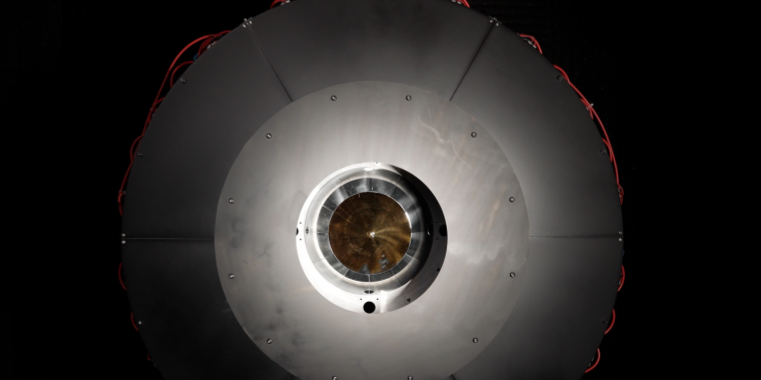The Defense Advanced Research Projects Agency said that a project team that tested new optical wireless energy -receiver technology was able to transfer 800 W power to a receiver at 8.6 km away in a 30 -second transmission. It claims that it is a distance and power record between the demonstration results of optical power bundle.
The US Defense Advanced Research Projects Agency (DARPA) has announced record results in a test campaign of a new optical power-stalking receiver.
“The team registered more than 800 Watt power supplied during a 30 -second transmission of a laser of 8.6 kilometers (5.3 miles) distance,” Darpa said.
The results represent distance and power records for this type of wireless energy transfer under reported demonstrations, according to the researchers, and that so far the largest reported distance for a “noticeable amount of” optical power, more than one microwatt, 230 watts on average power was 1.7 kilometers for 25 seconds. It also referred to a transfer of energy over 3.7 kilometers from an unknown quantity.
“It is without a doubt that we have absolutely erased all previously reported optical bundle of demonstrations for power and distance,” said Paul Jaffe of the Darpa Tactical Technology Office in a statement.
Darpa describes how the new optical powerful receiver works and said that the laser beam enters a diaphragm, hits a parabolic mirror and reflects on dozens of photovoltaic cells that are arranged around the inside of the device, which convert the energy back into usable power. No further technical details about the Emitter, channel or laser technologies were announced.
Both the transmitter and the optical receiver were on the ground for the experiments. “It is a lot easier to send a current beam directly up or down compared to the ground, because there is so much less atmosphere to continue fighting,” Jaffe said.
The work was completed within the DARPA persistent Optical Wireless Energy Relay (Power) program, a multi-phase initiative that proposes a network of optical channels and recipients that act as a relay system to “immediately shine electricity from a location where it can easily be generated where it is needed.” For example, supplying electricity to devices at remote and risky locations where the ability to supply fuel is limited, such as battlefields and disaster zones.
Although the focus of the demonstration was to “quickly validate the ability of a new design” to extend the potential distance and non -efficiency, the team reported that the recipient achieved 20% efficiency at “shorter distances”. “In the course of the test campaign, more than a megajoule or energy was transferred,” it added.
Image: Darpa
The recipient, who is said to be able to scales the potential to use with unmanned aircraft (UAVs) was designed by Teravec Technologies, supported by Packet Digital and Rochester Institute of Technologyall based in the US
The research group also included scientists from the US Naval Research Laboratory and the US Army Test facility with high energy laser systems.
Looking ahead, the next phase of the Power Program, which is open to new potential research partners, will demonstrate the “benefits of integrated relay and vertical power transfer”.
Different groups develop powerful technology as PV -Magazine has reported. Two recent who applies it in a space-based or satellite-based context are Space-Zonne-Zon in the UK and Aetherfulx I.n the vs.
This content is protected by copyright and may not be reused. If you want to work with us and reuse part of our content, please contact: editors@pv-magazine.com.
Popular content


